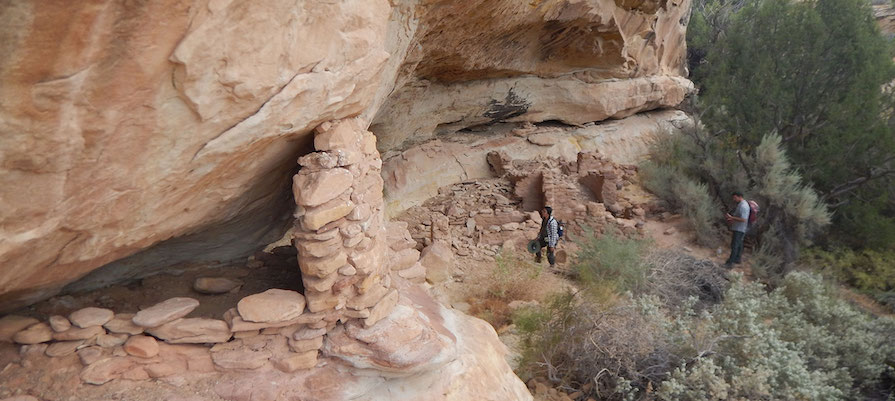
“The medicines on the landscape all have a story. The original proposal to designate 1.9 million acres for Bears Ears National Monument came from listening to the elders and medicine people who mapped culturally significant plants to protect our narratives. In terms of management, traditional knowledge is crucial to protect the entire ecosystem as a cultural living landscape…”
Cynthia Wilson, director of the Traditional Foods Program for Utah Diné Bikéyah
and member of the Navajo (Diné) Nation.
A new study by GCSC-affiliated faculty Brian Codding, Lisbeth Louderback, and colleagues draws on ecology, archaealogy, and indigenous knowledge can guide resource management in the Bears Ears region.
Below is an exerpt from the full story in At the U:
Indigenous people have lived in the Bears Ears region of southeastern Utah for millennia. Ancestral Pueblos built elaborate houses, check dams, agricultural terraces and other modifications of the landscape, leaving ecological legacies that persist to this day…
For the first time, a new study evaluated ecological legacies, archaeo-ecosystem restoration and Indigenous co-management practices in the Bears Ears region on the Colorado Plateau. The study published on May 17, 2021 in the journal Proceedings of the National Academy of Sciences.
“Bears Ears is not just about boundaries, it’s about management,” said the study’s lead author Bruce Pavlik, director of conservation at Red Butte Garden. “And it’s not just about artifacts. It’s also about the archaeo-ecosystems that are there. That’s what’s sacred to Native people.”
The authors surveyed 25 archaeological sites in the Bears Ears region that represented a wide range of locations, environments and archaeological complexity. By collecting plant specimens found at those sites, they compiled a list of 117 culturally significant plant species—those used for food, medicinal, ceremonial and utilitarian purposes by the Hopi Tribe, Ute Mountain Ute Tribe, Apache Tribe, Pueblo of Zuni and the Navajo (Diné) Nation who trace ancestry to or currently reside in the region…
“What Tribal members have said all along is that you don’t just preserve the archaeological site,” said Lisbeth Louderback, curator of archaeology and director of the archaeobotany lab at the Natural History Museum of Utah and anthropologist at the University of Utah. “You have to preserve the entire resource space around the site, including the plants. Building a management plan incorporating both western science and traditional knowledge will get a full picture of the best way to take care of the resources and the monument.”
